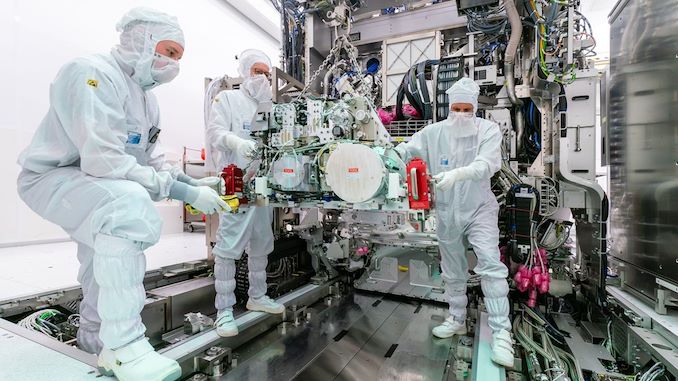Breaking Down ASML’s Latest Leap in Chipmaking Tech
Hey there, tech enthusiasts and curious minds! Ever pondered how the extremely tiny and complex chips, powering everything from your smartphone to your car, come to life? Well, let me walk you through some fascinating advancements in microelectronics, particularly focusing on what’s cooking in the pot at Intel and the broader chip-making realm. Hang tight, because things are about to get microscopically majestic!
The Spotlight on ASML’s Groundbreaking Announcement
So, you might already know that our tech-hungry hearts often skip a beat for gadgets featuring microelectronics crafted with the crème de la crème of process technologies. For giants like Intel, this translates to harnessing the power of High-NA extreme ultraviolet (EUV) lithography in the not-so-distant future. Yet, here’s a kicker – a bulk of the chips set to empower our gadgets over the next few years relies on good old Low-NA EUV lithography. This pivot makes ASML’s recent announcement akin to a thunderclap in a serene sky.
If you haven’t caught the buzz yet, let me fill you in. ASML has rolled out its first updated Twinscan NXE:3800E lithography machine for fab setup, as spotted by Computerbase. This shiny new tool, sporting a 0.33 numerical aperture (Low-NA) in its arsenal, is prepped to usher in the era of chips based on 2nm and 3nm-class technologies. Pretty neat, huh?
Tweeting Towards Tech Triumphs
In the high-speed world of chip manufacturing, ASML recently tweeted about installing the first TWINSCAN NXE:3800E in a chip fab, boasting about catapulting lithography into uncharted territories. With advancements like new wafer stages, they’re all set to redefine productivity standards for printing advanced chips. It’s like watching a sprinter, previously hobbled by heavy chains, being given a pair of winged shoes!
Peering into ASML’s Crystal Ball
Though ASML plays its cards close to its chest, not revealing all the juicy details about the machine’s capabilities, earlier roadmaps hint at a sweet brew of enhanced wafer throughput and tighter wafer alignment precision, lovingly dubbed “matched-machine overlay” by ASML. Picture this – a goal to crack through 200 wafers per hour with their fifth-gen Low-NA EUV scanner. This leap could very well be a pivotal turnaround, especially considering the EUV lithography’s initial hiccup of a lower throughput rate, shadowed by the efficiency of today’s deep UV machines.
The Bigger Picture for Chip Foundries
For those in the logic and memory fab realm, the NXE:3800E isn’t just another tool – it’s a beacon of progress. With major fabs knee-deep in scaling operations and popping up additional facilities, ramping up production without escalating costs is the name of the game. And while EUV scanners don’t exactly come with a ‘bargain’ tag – think a cool $180 million and upwards for the NXE:3800E – each step towards faster EUV scanners spells significant financial implications for ASML, currently the lone warrior supplying these critical gadgets.
What Lies Beyond the 3800E?
After the NXE:3800E makes its mark, ASML isn’t planning to take a breather. The blueprint for at least one more generation of Low-NA EUV scanners is already being drafted, with the Twinscan NXE:4000F as the next star on the horizon, expected to debut around 2026. Imagine the possibilities!
Caught up in the tech tango? Keep an eye on ASML’s Twitter or dive into the details via Computerbase for the latest chronicles in chipmaking marvels. Trust me; it’s a whirlwind of innovation you wouldn’t want to miss!




